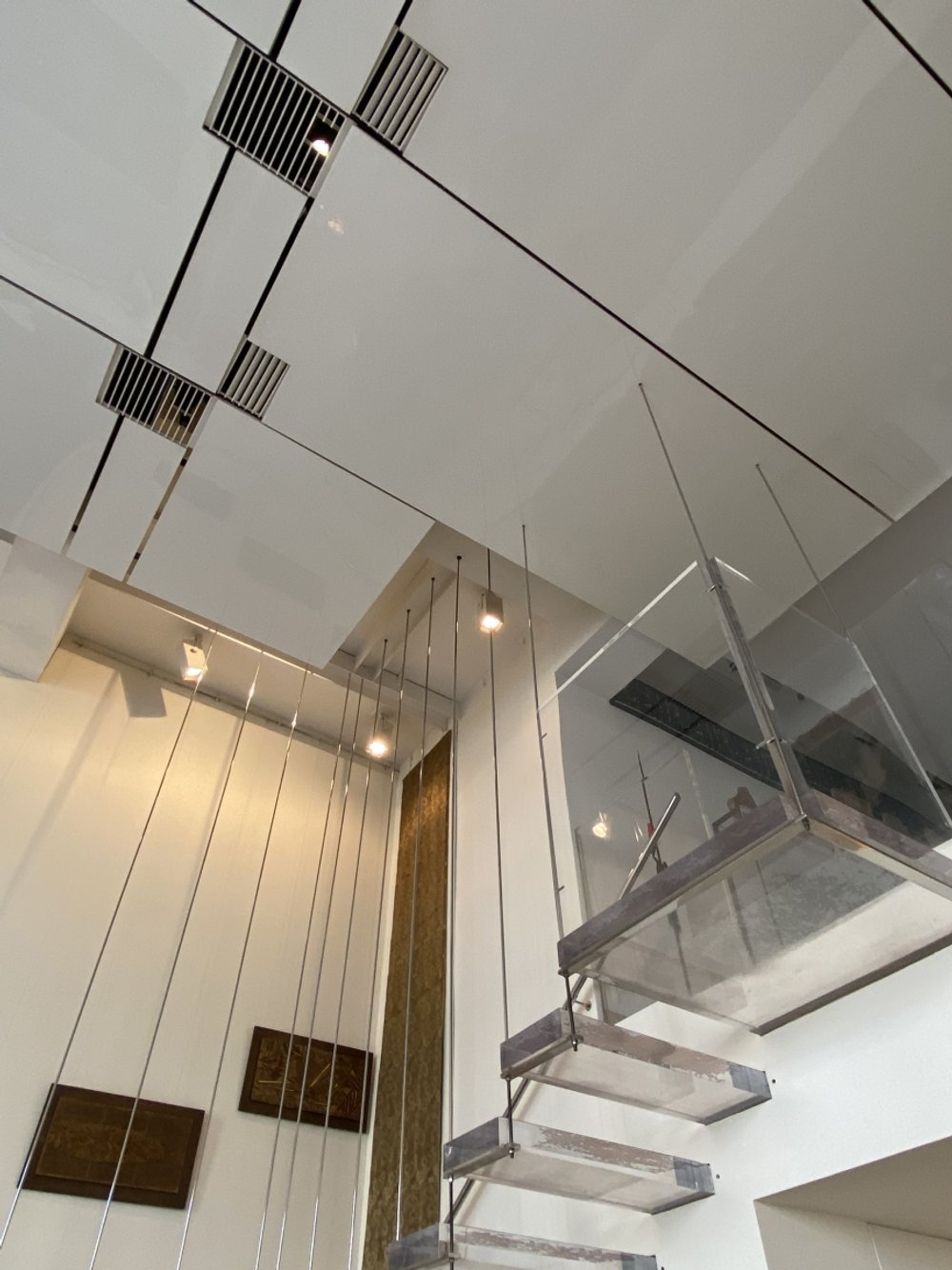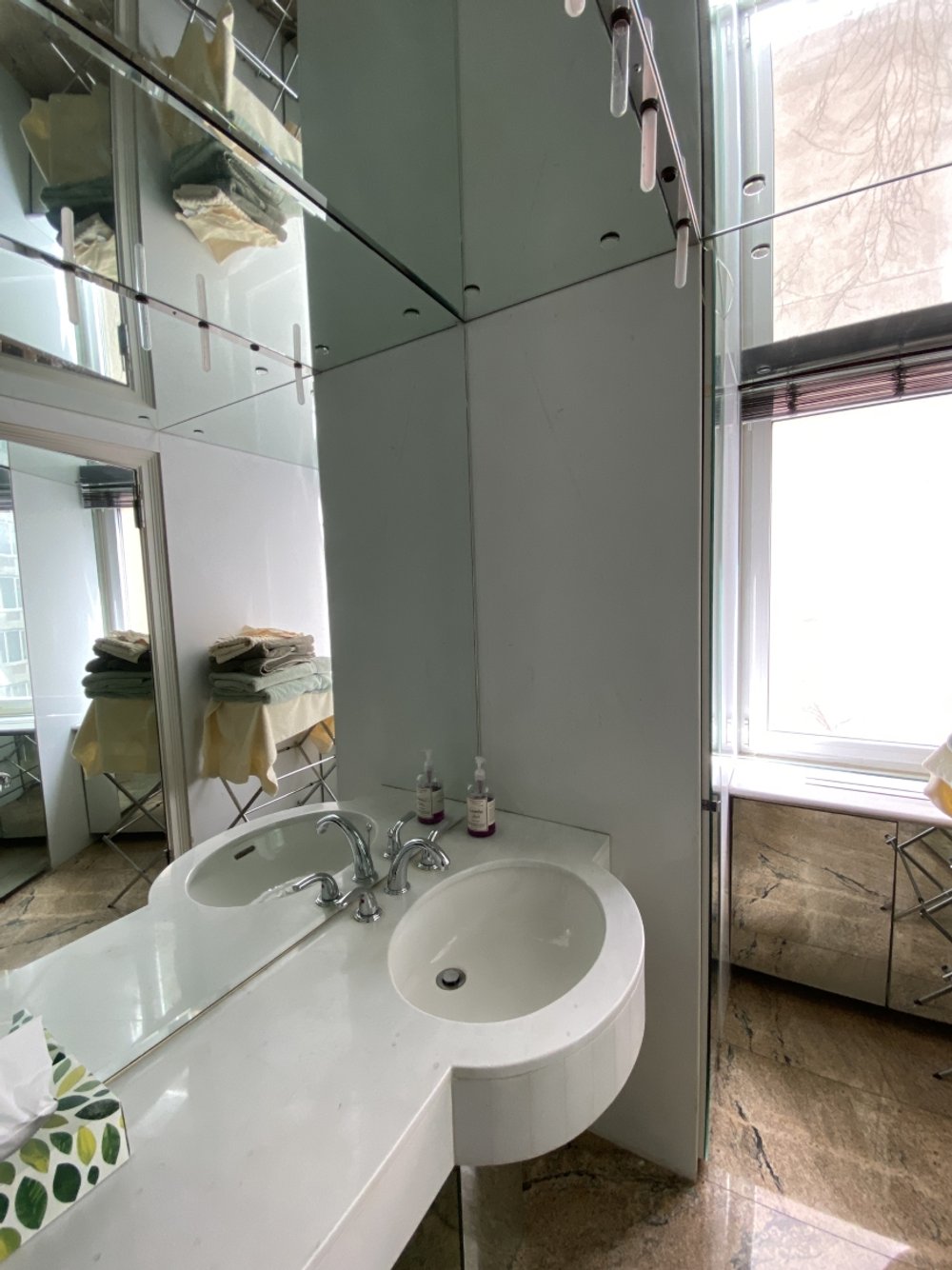Welcome to the Archives of The Paul Rudolph Institute for Modern Architecture. The purpose of this online collection is to function as a tool for scholars, students, architects, preservationists, journalists and other interested parties. The archive consists of photographs, slides, articles and publications from Rudolph’s lifetime; physical drawings and models; personal photos and memorabilia; and contemporary photographs and articles.
Some of the materials are in the public domain, some are offered under Creative Commons, and some are owned by others, including the Paul Rudolph Estate. Please speak with a representative of The Paul Rudolph Institute for Modern Architecture before using any drawings or photos in the Archives. In all cases, the researcher shall determine how to appropriately publish or otherwise distribute the materials found in this collection, while maintaining appropriate protection of the applicable intellectual property rights.
In his will, Paul Rudolph gave his Architectural Archives (including drawings, plans, renderings, blueprints, models and other materials prepared in connection with his professional practice of architecture) to the Library of Congress Trust Fund following his death in 1997. A Stipulation of Settlement, signed on June 6, 2001 between the Paul Rudolph Estate and the Library of Congress Trust Fund, resulted in the transfer of those items to the Library of Congress among the Architectural Archives, that the Library of Congress determined suitable for its collections. The intellectual property rights of items transferred to the Library of Congress are in the public domain. The usage of the Paul M. Rudolph Archive at the Library of Congress and any intellectual property rights are governed by the Library of Congress Rights and Permissions.
However, the Library of Congress has not received the entirety of the Paul Rudolph architectural works, and therefore ownership and intellectual property rights of any materials that were not selected by the Library of Congress may not be in the public domain and may belong to the Paul Rudolph Estate.
LOCATION
Address: 322 East 57th Street #4/5B
City: New York
State: New York
Zip Code: 10022
Nation: United States
STATUS
Type: Residence
Status: Built
TECHNICAL DATA
Date(s): 1978
Site Area:
Floor Area: 3 beds, 3 baths
Height:
Floors (Above Ground): 2
Building Cost:
PROFESSIONAL TEAM
Client: Dr. Vallo M. Benjamin
Architect: Paul Rudolph
Associate Architect:
Landscape:
Structural:
MEP:
QS/PM:
SUPPLIERS
Contractor:
Subcontractor(s):
Benjamin Residence
The project consists of the interior renovation of unit #4/5B in an existing 21-story co-op apartment building.
Built in 1929 and completed in 1930, the original building was designed by architect Harry M. Clawson of Caughey and Evans, the same architects who designed and built the Hampshire House. Originally built as a 22-story hotel, 322 East 57th Street was converted to a co-op in 1959. The building is known for its 30‐foot‐square living rooms, 26 foot‐high ceilings and neo-Classical limestone facade.
The client, Dr. Vallo Benjamin (1934-2021) graduated from the Tehran School of Medical Sciences in 1958. Dr. Benjamin works in New York, NY and specializes in Neurosurgery.
Dr. Benjamin begins demolition of the apartment in February of 1976 before any plans are finished, working with two other architects. By the time Rudolph is hired, Dr. Benjamin has nearly demolished himself into a corner, where he occupies the only area free of major renovation - the wood-paneled library on the second floor. For a year Mr. Benjamin had been living without a kitchen in the apartment.
Dr. Benjamin passes away in 2021.
On February 23, 2022 the residence is listed for $3,500,000 USD by Brown Harris Stevens
“The renovation took so long because when I first started, I didn’t really know what I wanted.”
“I wanted to have a pure white architectural space where art objects would stand out and I wanted a contemplative environment, a cloistered retreat from the city.”
“I like what most people would call the coldness of the room. For example, reflective surfaces are intriguingly spatial. I don’t see them as cold.”
“I feel lucky to have had the opportunity of working in that apartment. How many apartments have such a clear idea of the organization of space? So many high-rise apartments, expensive or not, are collections of cubicles, architecturally the same. The double-height area was more of a space than a room.”
“I spent six years in medical school and eight years in architecture school with this apartment. What I learned about renovation is that you have to work to subordinate an existing place to your esthetic intentions. A place that is already there imposes itself on you. You have to accommodate it.”
DRAWINGS - Design Drawings / Renderings
DRAWINGS - Construction Drawings
DRAWINGS - Shop Drawings
PHOTOS - Project Model
PHOTOS - During Construction
PHOTOS - Completed Project
PHOTOS - Current Conditions
LINKS FOR MORE INFORMATION
RELATED DOWNLOADS
PROJECT BIBLIOGRAPHY
Emma Reynolds. “This Striking NYC Duplex Has a Solarium That Cantilevers Off the Edge of the Building.” Robb Report, Mar. 2022.
Joseph Giovannini. “Two Perfectionists: Architect and Client.” The New York Times, 24 May 1984.































































































































